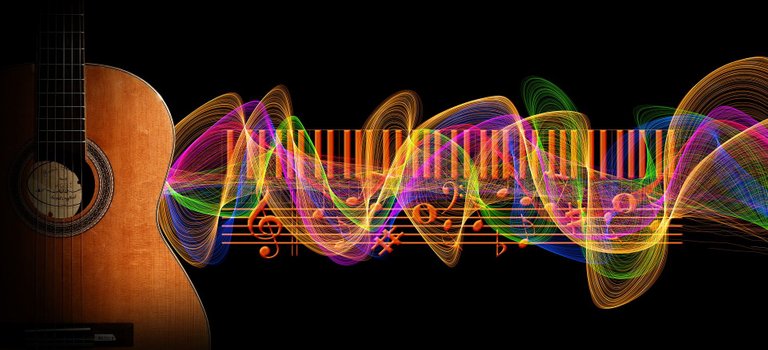
As a guitarist you probably know how tedious it is to find good graphics to help you to orient yourself on the fretboard, here are some insightful documents I created for us.
I started to teach piano and guitar lessons and I felt compelled to create a comprehensive overview of the basics so that I can teach my students effectively how to orient themselves on their instrument. Since I wasn’t able to find an appealing overview on the internet and I already was able to expand my own understanding with my own collection I wanted to make it available for everyone who’s interested. The guitar is somehow a little more complicated than the piano, because we can find the same notes on different parts of the neck and it becomes a very tedious task if we have to memorise all of those shapes and their context in the greater scheme just by using our imagination. This overview isn’t complete yet but it will certainly provide you with a lot of insights to play with. Feel free to share any important concept and connections for an easier understanding in the comments and I’ll probably add it as this document is growing. I’ll definitely add the seventh chords and shapes, the circle of fifths and maybe the CAGED system in a later stage.
So here we go.
It starts at the very beginning with the basic chord shapes everyone should know and learns in the beginning and right after that we get to the Barre-Chords and Power-Chords. These are the most fundamental basics everyone who starts out will be able to navigate pretty fast.
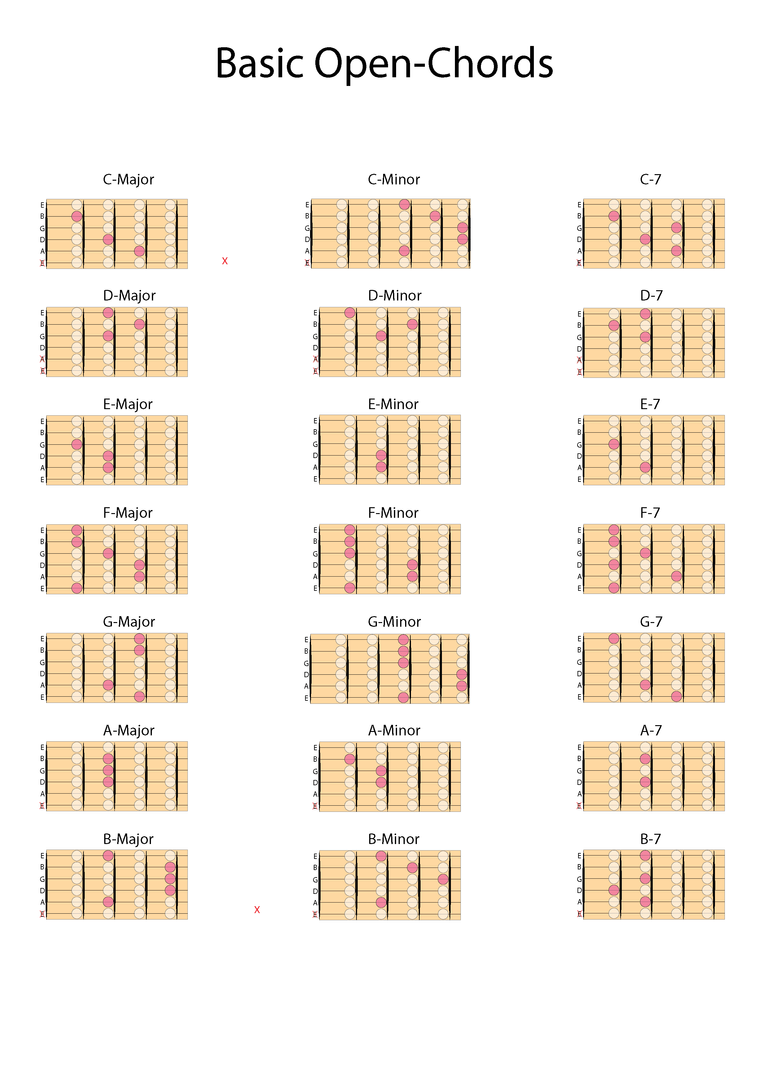
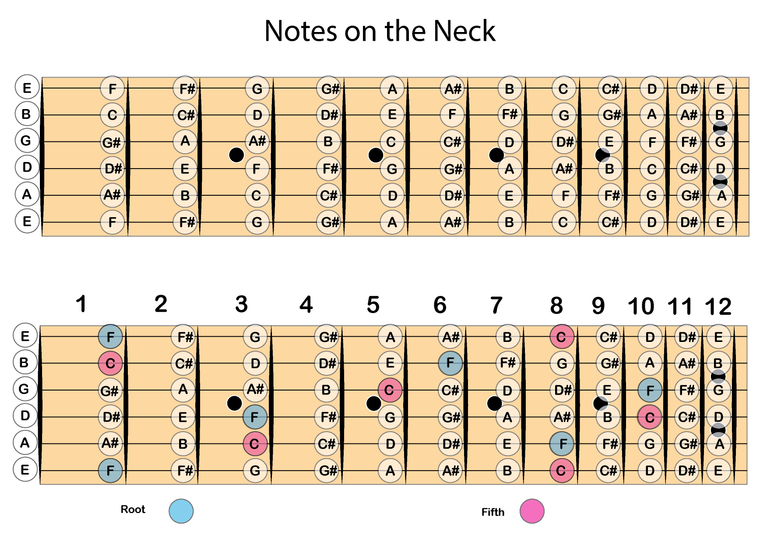
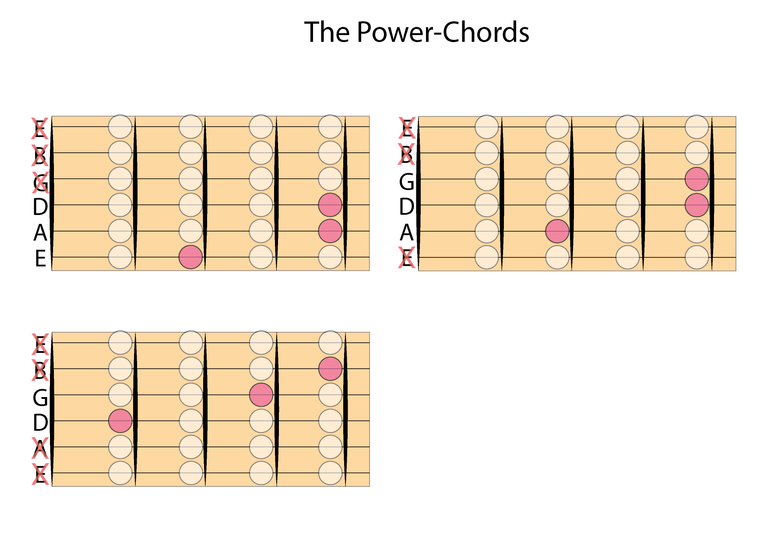
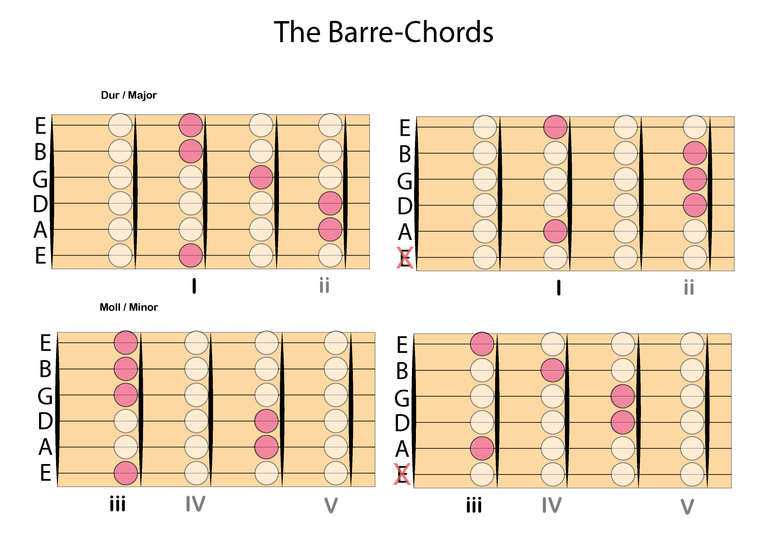
Then it goes on with the 5-note or Pentatonic scale for easy soloing over chord-progressions, which still is very accessible and very easy to memorize. After learning the pentatonic scale we expand upon it by adding the missing two notes and get the major-scale. I left out the basic definition of what a scale exactly is but there’s enough material to find out, maybe I’ll add it for the sake of completenes.
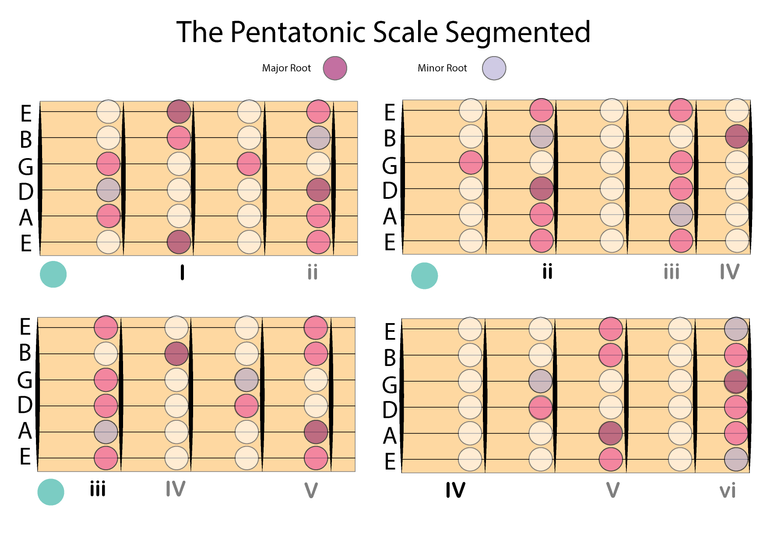
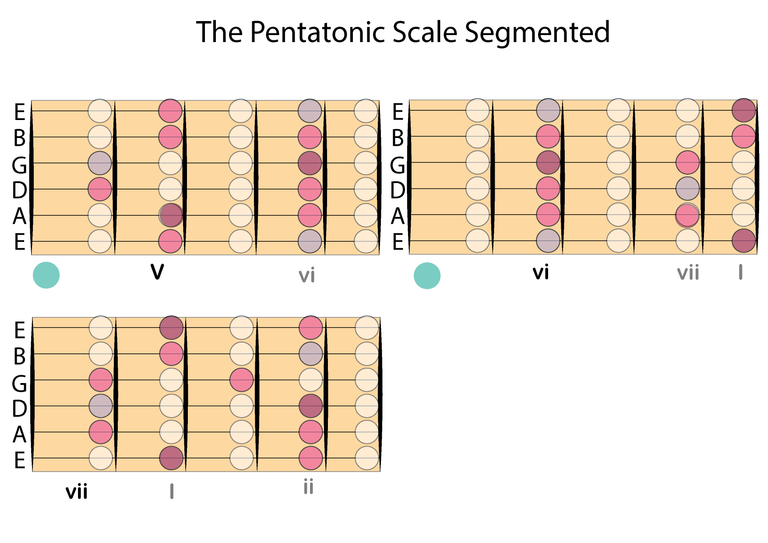
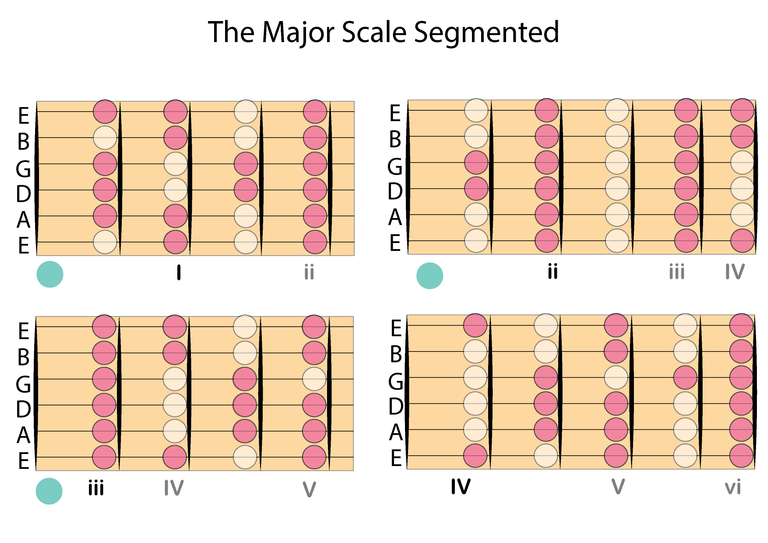
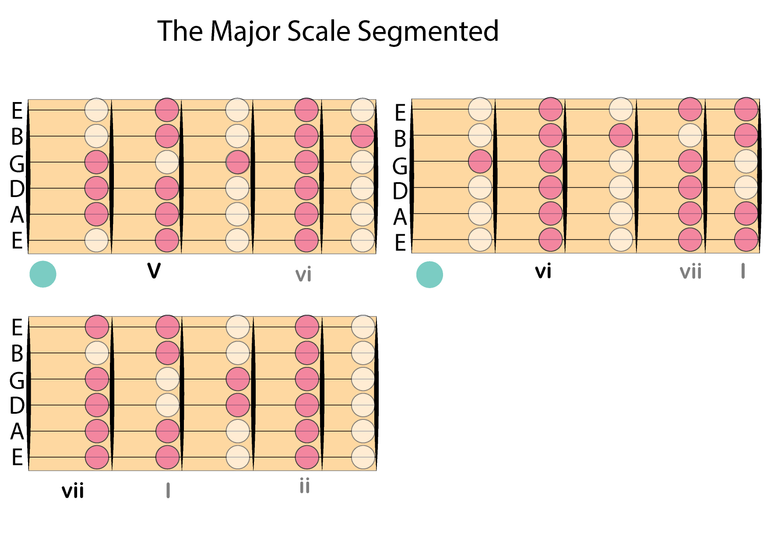

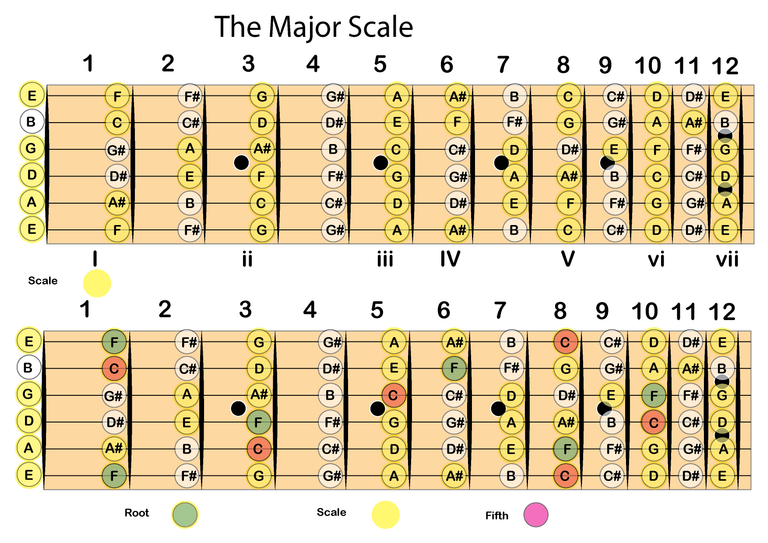
The roman numerals tell us which scale degree we’re at on the lowest string when playing a specific segment of a scale or the corresponding Barre-Chord, capital roman numerals are Major Chords and lower-case roman numerals are Minor Chords. The. scale degrees are a very important concept everyone should understand and memorise as a pattern for at least the lowest two strings it will help tremendously in playing around and connecting the degrees of the triad shapes.
Most people get to that conceptual understanding of the neck, maybe learn some ways around by discovering some new chord-shapes that just somehow work, but then get stuck. It’s a good place to get stuck because you’re basically able to jam and explore and sound great and can call yourself an intermediate guitarist at least your conceptual grasp of it. However the real mastery of the fretboard starts with the following concept of the Triads.
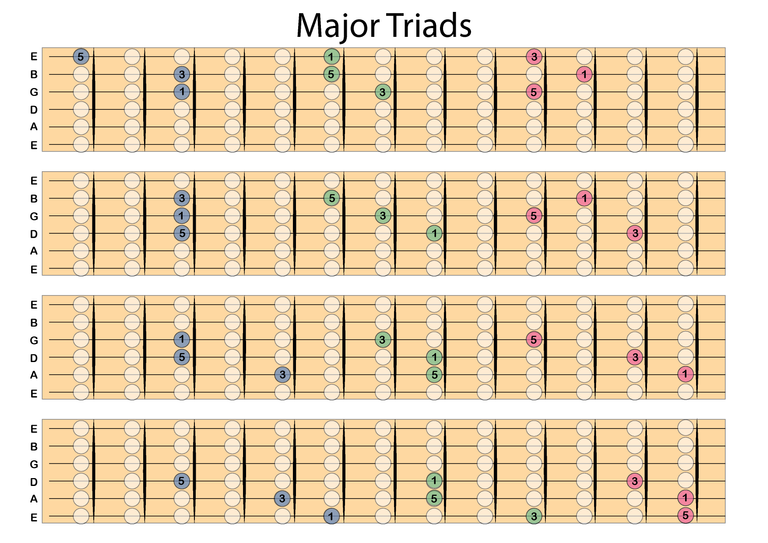
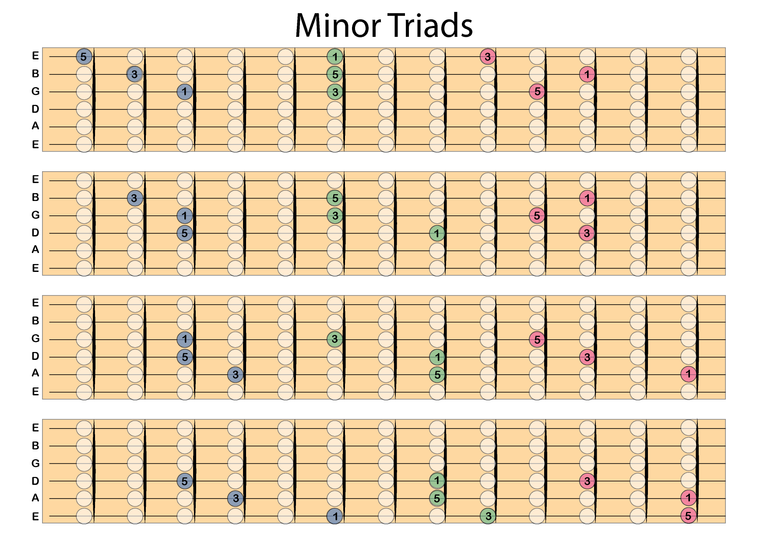
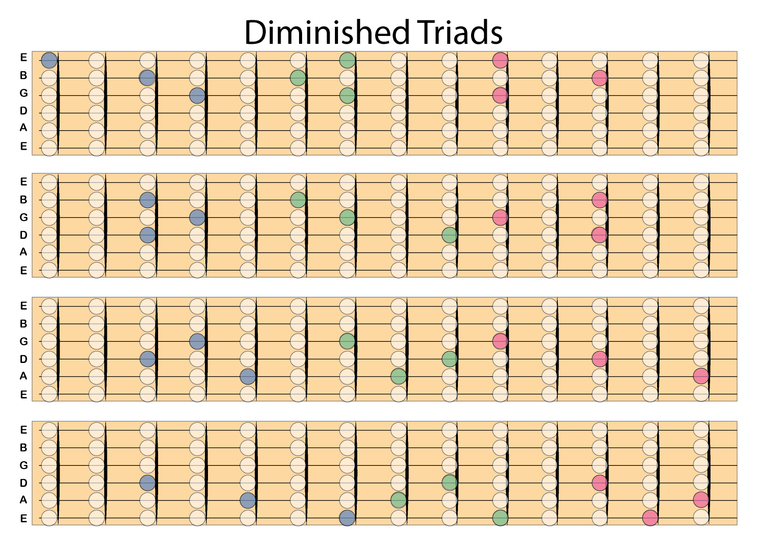
There are no orientation points on these graphics because where you play changes depending on the key you're in but the patterns and spacial relationships between the notes stay the same.
The order in which the notes of the triad are played is called an inversion. Depending on which inversion you start out from to build your triad shape vertically down the fretboard you get another shape. That's why there are three colours.
So when you combine the notes of each colour you'll get a nice shape containing all the triad notes of the same triad and shapes in all inversions which makes it very handy to memorise.
The Major triads used within the context of the Major scale are always either the I, IV or V degree the Minor triads are always the ii, iii or vi degree and the Diminished triad is on the vii° degree.
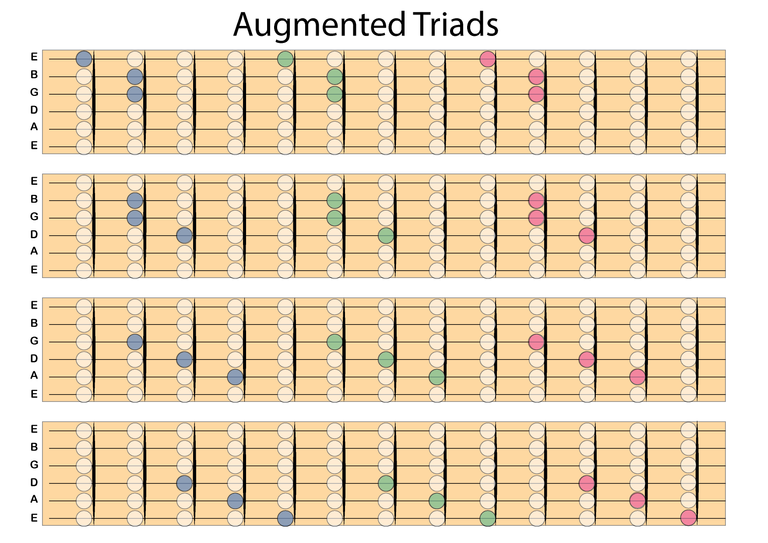
Augmented triads are composed of two major third intervals are basically the opposite of diminished triads which are composed of two minor third intervals.
I left them out in the following graphics.
These help you to practice the triads of the scale-degrees in different inversions in any key.
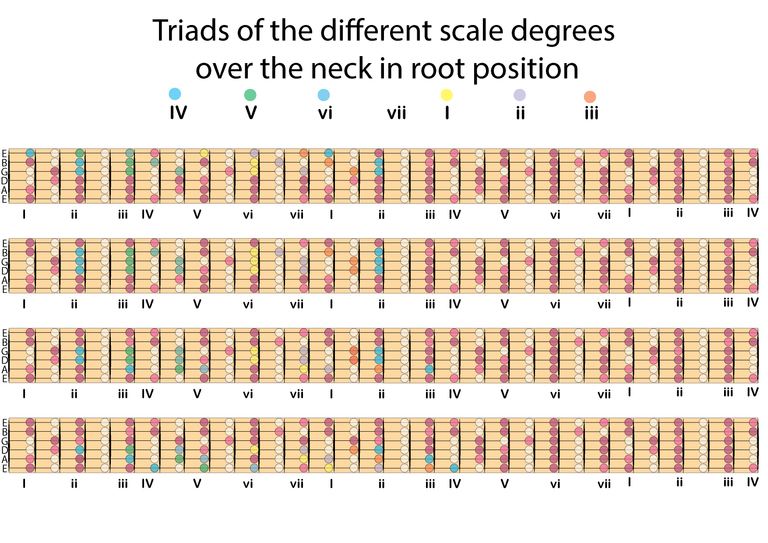
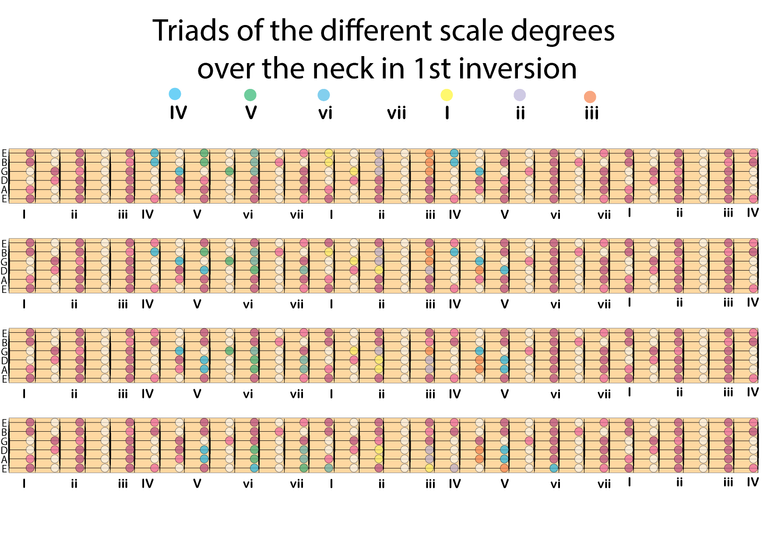
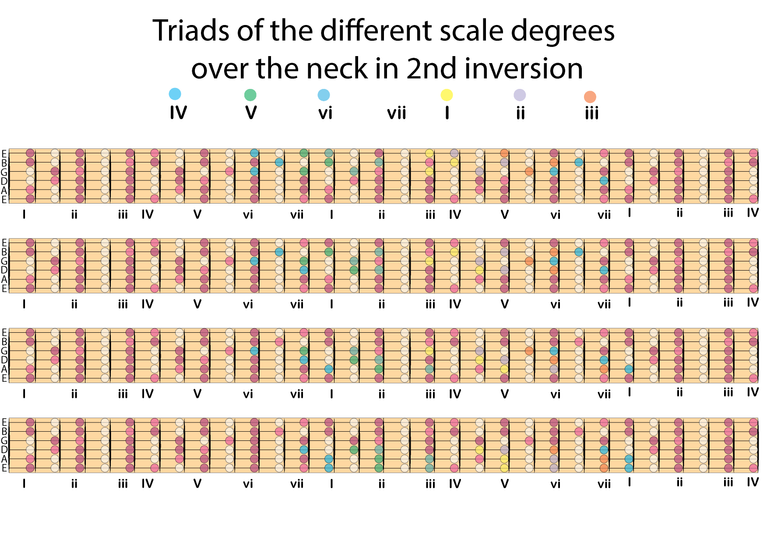
The next two sheets are the most valuable to find your fastest way around the triads within a key all over the fretboard. In my estimation pure gold! They show you the shortest way to change a triad into another scale degree by only changing one note. The same could also be done by changing two notes of a triad and is somehow already contained within these sheets maybe I'll make an extra one for that as well, we'll see you'll figure it out anyways.
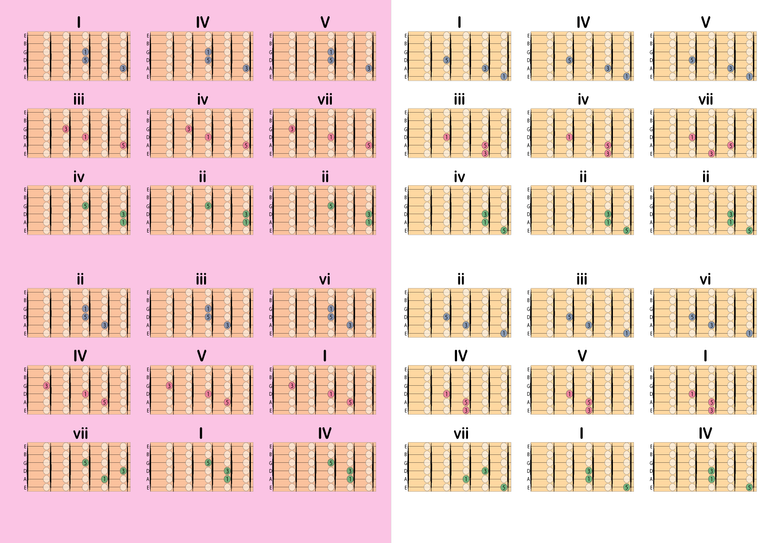
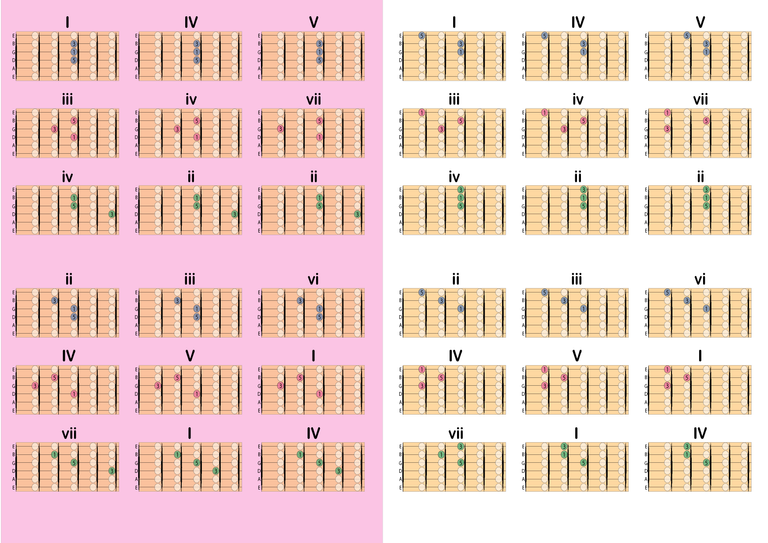
And lastly we have our beloved spread triads. Spread triads are triad voicing, whereby the middle note of any inversion is played one octave higher.
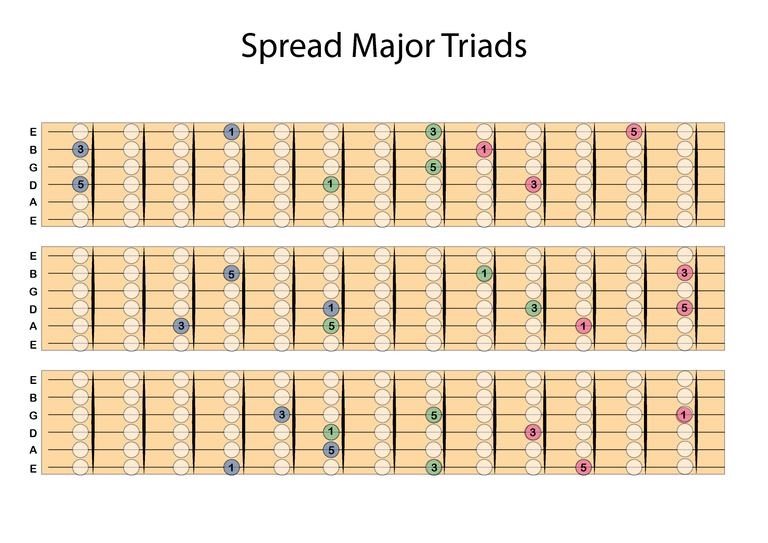
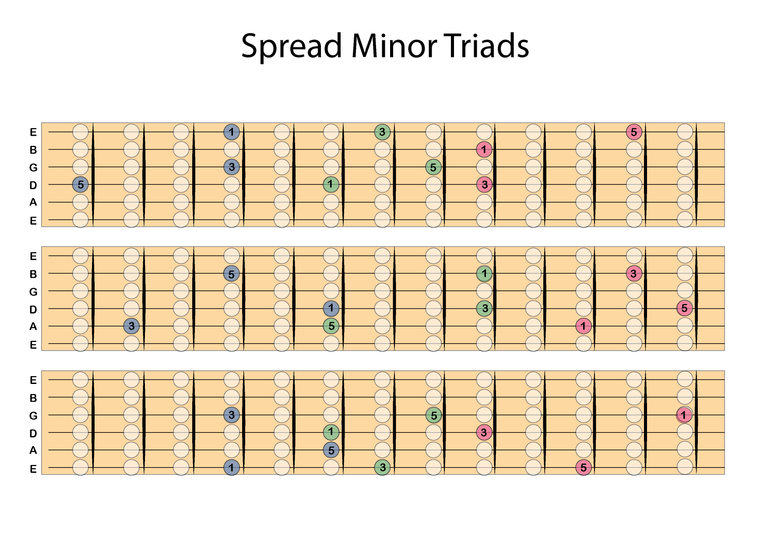
So I hope this helps anyone out there to solve the riddle of the guitar fretboard and create beautiful music. Feel free to share this with your guitarist friends. I'll update this collection of concepts as I get to it and share it with all of you. I also made an overview for the piano which I will share as well at some point.
Enjoy your playing. 😊🎸🎶✨
Yeah, andwrwcht praktisch, da wet mer ja gad gitarre spielen lernen hahaj greez
!BEER 🍻
View or trade
BEER.BEERHey @amazedme, here is a little bit of from @sandymeyer for you. Enjoy it!Learn how to earn FREE BEER each day by staking your
BEER.Congratulations @amazedme! You have completed the following achievement on the Hive blockchain and have been rewarded with new badge(s):
Your next target is to reach 600 upvotes.
You can view your badges on your board and compare yourself to others in the Ranking
If you no longer want to receive notifications, reply to this comment with the word
STOPSupport the HiveBuzz project. Vote for our proposal!